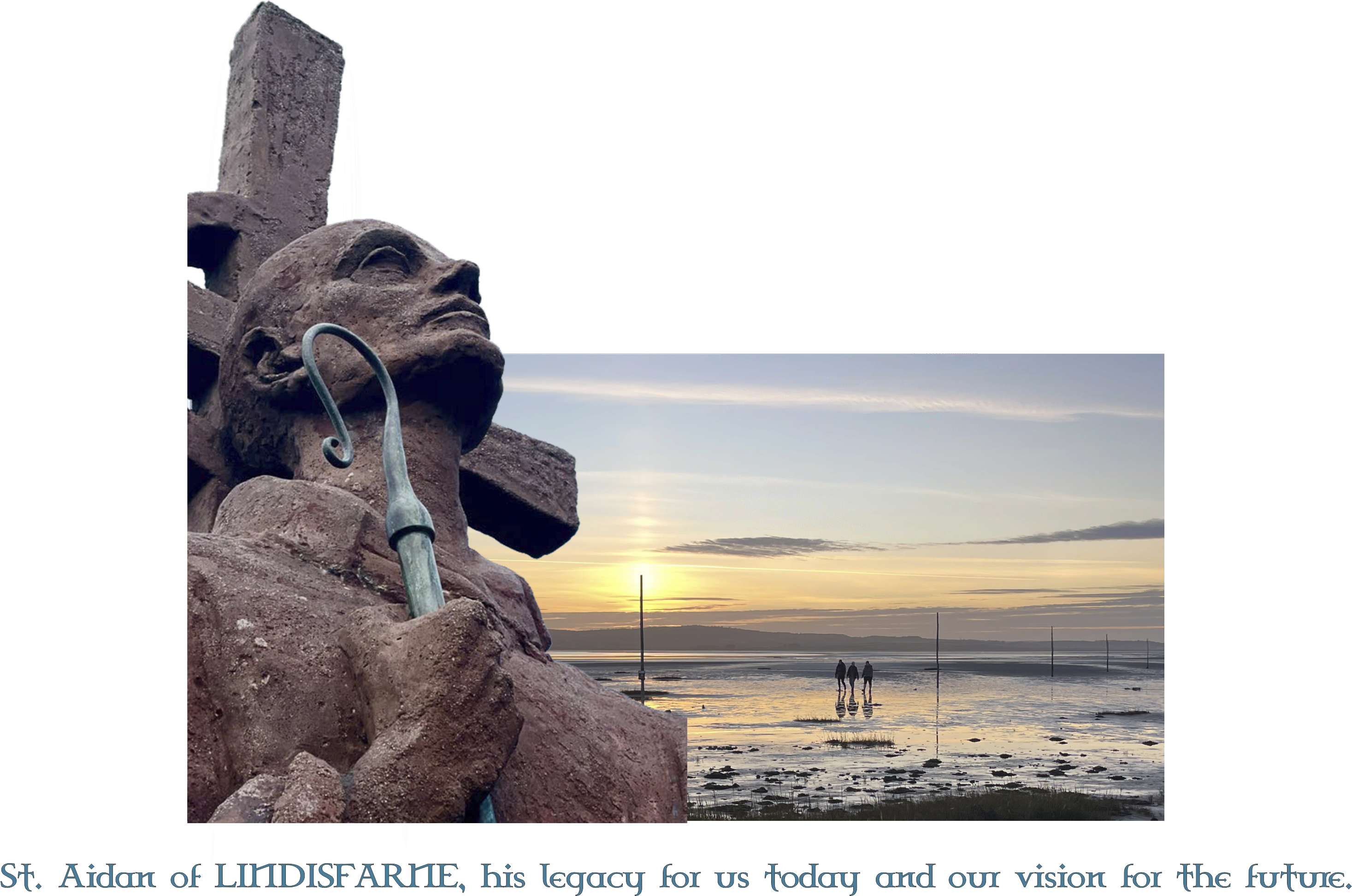





Around the statue of Saint Aidan
A place to stop, reflect and simply be... we hope to place recycled plastic wood effect benches and a paved walkway around the edge of the square where our iconic statue of Saint Aidan looks towards the ruins of the Benedictine Priory. Carved by by Kathleen Parbury in 1958 and recently restored the statue will become the focal point of a restful, comfortable and reflective space.


The Path of Saint Aidan
We are working on a new pilgrimage path called Saint Aidan’s Way.
From the ‘first cathedral’ on Holy Island to the ‘new cathedral’ in Newcastle.
A joint project with Newcastle cathedral and churches along the way. A walk that will take you from Holy island, through Bamburgh and then down the coast through Blyth and on into Newcastle. Through areas of deep beauty and deep deprivation. A way that echoes
St Aidan’s values as inclusive peacemaker.



St Mary's Church
The parish church of St Mary's is a unique sanctuary of antiquity, beauty and peace.
The church, monastery and school were founded by St Aidan in 635AD, the first Bishop of Lindisfarne. The English monks, who followed the first generation of Irish (via Scotland) replaced the wooden structure with a stone building, of which the foundations still lie beneath.
It is hard to imagine the influence and importance in historical and spiritual terms of this holy island, governed by the ebb and flow of the tides. Yet its missionary outreach throughout England was hugely significant, contributing largely to the spread of the Christian gospel through St Chad
to the Midlands, St Cedd to the South East, St Hilda to Whitby, and St Ebba going North. Hence it earned the title ‘Cradle of Christianity’.
St Mary’s is a living, working church of the Church of England, in the Diocese of Newcastle. It serves not only the small Island population but the 500,000 pilgrims and visitors who visit each year.
The present church is over 800 years old and is built over and around an earlier Saxon church which is likely to be the site of the first wooden church built by St. Aidan in 635.
Our future plans include:
- Creating an ‘invisible’ kitchen area that blends in when not in use so that we can build on our ministry of hospitality.
- Making the church sustainably and economically warm and damp free
by installing a glass entranceway and improving our heating system. - Improve our interpretation of the church, island Saints and the qualities that make our home the special, holy, ‘thin’ place that speaks to so many people today.

The Glebe Field Peace Garden


We are working with the Christian environmental charity, A Rocha, to turn this unused church field into a place of blessing for all. A place where people can come and sit and reflect, looking out over St Cuthbert’s Island. Where people can learn about ‘creation care’ and the Christian response to the climate crisis.
Initial plans include a biodiversity meadow, a St Aidan’s fire labyrinth, and a disabled access viewing platform.

About Saint Aidan of Lindisfarne
Aidan was an Irish monk from the monastery founded on Iona by Columba.
Soon after 633 King Oswald of Northumbria who was raised on Iona invited their community to send monks to start a monastery near to his ruling seat of Bamburgh.
Aidan chose Lindisfarne as his base and began to spread the Christian message throughout the area by travelling the mainland roads on foot and talking to those he met about God and the life and teachings of Jesus. He also started a school on the island that would eventually make Lindisfarne a centre of learning and creativity in the North of England.
Bede, who recorded church history up until 731, wrote that Aidan travelled on foot, used gifts from the rich to help the poor and to release slaves. He also tells us that Aidan ‘was a man of remarkable gentleness, goodness, and moderation, zealous for God’.
Today we aim to structure all our future plans around the legacy of Saint Aidan, a man who cared passionately about people and their relationship with God.

